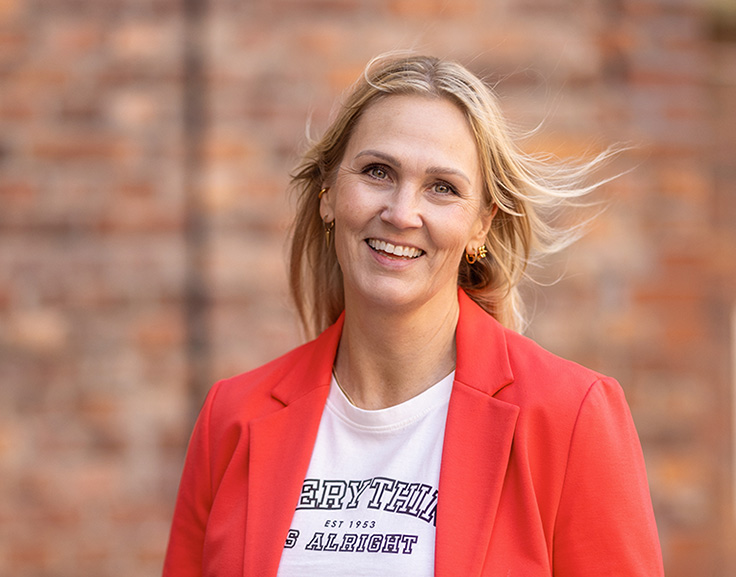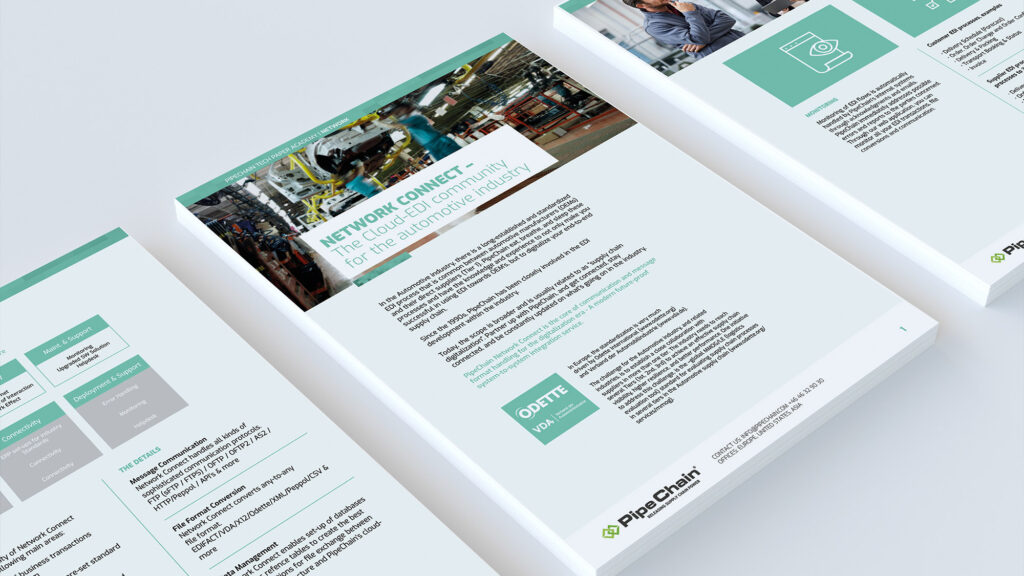
From Just In Time to Just In Case – Supply chain efficiency in a turbulent world
BY AGNETA LUND
For decades, the automotive industry lived by a simple mantra: Just-in-Time is the only way to go. It was the undisputed truth, the core principle that drove efficiency, minimized waste, and optimized costs. We built incredibly lean, intricate global systems designed for a world that was, for the most part, predictable. But that world no longer exists.
The last few years have felt like a series of seismic shocks. A global pandemic, semiconductor shortages, a ship stuck sideways in the Suez Canal, and geopolitical instability have revealed the fragility of the systems we so carefully constructed. The predictable has become unpredictable, and the mantra of “Just-in-Time” is no longer enough. We’ve been forced into a new, more complex reality, one that demands a “Just-in-Case” mindset.
As the CEO of a company that sits at the very heart of these data flows, I see the daily struggles and the strategic paradoxes our customers – the suppliers to the world’s leading vehicle manufacturers – face every single day.
Caught in the middle
If you want to understand the pressure in today’s supply chain, talk to a mid-sized Swedish supplier. I often think of our clients in western Sweden, who are some of the best in the world at what they do. Right now, they are being squeezed from two directions.
On one side, they face their own suppliers, with volatile lead times and rising costs. On the other, they have their OEM customers – the big automotive companies – who, despite the global turmoil, still have very tough demands on price and precision. Add to this the challenge of unreliable forecasts. A supplier might receive a plan that says, “we think we’ll need 500 units from you in three months”. That forecast can fluctuate daily. When the actual order arrives, it might be for 350. If you’ve produced 500, you’re now sitting on 150 units of tied-up capital, hoping they’ll be needed later. For a smaller supplier, heavily dependent on a single major automaker, this volatility in the forecasts can be devastating.
It takes more than a bigger warehouse to redefining ”Resilience”
When people hear “Just-in-Case”, the immediate thought is often, “Okay, we just need bigger warehouses”. This is a dangerous oversimplification. Of course, building inventory can be a part of the strategy; we have a client who thrived during the pandemic precisely because they had stock when no one else did. But this is more of an anecdote than it is advice. Building a big inventory is a costly, blunt instrument to build rescilience.
True resilience isn’t about stockpiling; it’s about intelligence. It’s about visibility and agility. The real mindset shift is moving from seeing the supply chain as a cost center to seeing it as a source of competitive advantage. This is why conversations about supply chain risk have started moving from the Supply Chain department to the boardroom. Again, this apply to every boardroom, but more than ever before.
For decades, the digital backbone of the supply chain has been built on proven standards like EDI, creating a reliable flow of information. But reliability is no longer enough; we need proactivity. The discussion isn’t about replacing these systems or not, it’s about how to visualize them. It’s about unlocking the critical data within traditional messages and combining it with new, real-time sources like APIs and live logistics data. This synthesis is what turns a simple message into a predictive tool. It’s how you get two weeks’ notice of a shipping delay instead of a surprise at the loading dock. That’s the difference between a crisis and a manageable problem. That is modern resilience.
So, if bigger warehouses aren’t the primary answer, what separates the suppliers who are successfully navigating this new landscape?
First, they treat data as a strategic asset. They’ve moved past seeing data exchange as a necessary evil and started using it to create a single source of truth. This allows them to trust their information and make fast, correct decisions. This is where we’ve focused our efforts, even developing AI functionality to help our clients make better sense of those fluctuating OEM forecasts, turning uncertainty into a planned response.
Second, they are flexible and courageous. The winners are those who can change course. Based on solid data, they have the courage to say, “Our usual principle is to keep stock low, but the data indicates an opportunity or a risk, so we are going to increase production now”. This requires a certain amount of courage, but I believe from experience the best businesses have a degree of courage built in to their culture.
Finally, they foster deep, proactive partnerships with their customers. They don’t just wait for problems to happen. They use their visibility to warn a customer about a potential delay long before it becomes critical, often arriving with a proposed solution in hand. This transforms the relationship from a transactional one to a true partnership, strengthening the entire chain.
The winners? The ones with a human touch
Looking ahead another decade, I believe the single most important factor for success will be the ability to communicate. Having a great product will be a given—a hygiene factor. The winners will be the suppliers who can seamlessly provide all the necessary data their partners need, from quality and sustainability metrics to transaction data, without any glitches. And that requires a human touch.
In a world of increasing digitalization, the value of a partner who truly understands your business cannot be overstated. Technology itself is rarely the problem; it’s about the people and processes. That’s why you need someone you can call who understands the language of supply chains, who can guide you through the complexities, and who is there to solve a problem now, not in “3-5 business days”. That’s the real meaning of being a partner, and in this turbulent world, it’s more critical than ever.

Agneta Lund, CEO, PipeChain Networks. Photo: Robert Lipic.
Insights

If you are interested in learning more about how to create a powerful connected supply chain, here are our latest insights.
Tech papers

To help you get a deeper and better understanding of our solutions and your supply chain, we have developed a number of detailed tech papers on different subjects.
-
Necessary
These cookies are not optional. They are needed for the website to function. -
Statistics
In order for us to improve the website's functionality and structure, based on how the website is used. -
Experience
In order for our website to perform as well as possible during your visit. If you refuse these cookies, some functionality will disappear from the website. -
Marketing
By sharing your interests and behavior as you visit our site, you increase the chance of seeing personalized content and offers.


